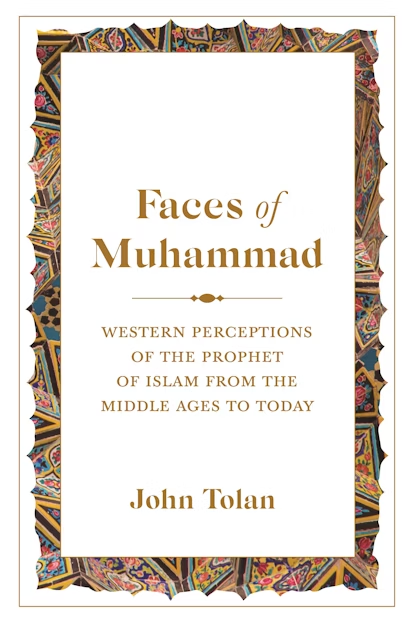Historian John Victor Tolan’s Faces of Muhammad is more than a history of European portrayals of the Prophet of Islam. It is a story of projection: of how Europeans, from monks to monarchs, reformers to revolutionaries, repeatedly cast Muhammad (peace be upon him) in roles that suited their own anxieties and ambitions. Heretic, tyrant, lawgiver, genius — each “face” says as much about Europe as it does about Islam.
Yet this history is not sealed in the past. The “faces” of Muhammad that Tolan traces across centuries still echo in today’s debates about pluralism, secularism, and Islamophobia.
The Many Faces, Then and Now
The Middle Ages painted Muhammad as a false prophet and heresiarch — a device to reinforce Christian supremacy.
The Crusades cast him as a military menace, a symbol around which to rally against “Saracens.”
The Renaissance and Enlightenment re-imagined him as either a rival reformer or a tyrannical impostor, tools for critiquing Europe’s own religious institutions.
Romanticism briefly admired him as a poet-prophet, though Orientalist scholarship in the 19th century re-entrenched him within colonial hierarchies.
The 20th century introduced more scholarly nuance, yet popular culture and politics still recycle old tropes: Muhammad as fanatic, conqueror, or authoritarian.
Tolan’s conclusion is stark but insightful: Muhammad((peace be upon him) has rarely been approached neutrally in Europe. He has always been a mirror for Europe’s self-perceptions and fears.
Why This Matters for Today
Fast-forward to the 21st century: in the European public imagination, Muhammad is still too often framed through inherited caricatures — either as an emblem of fanaticism or as a shorthand for cultural otherness.
- The Danish cartoons controversy (2005), which depicted Muhammad in derogatory ways, echoed medieval portrayals that conflated the Prophet with violence and deception.
- In France’s debates on secularism (laïcité), Muhammad is often used symbolically in disputes over veils, mosques, and caricatures, reinforcing a centuries-old tension between religious expression and political identity.
- Post-9/11 rhetoric in the US and Europe routinely invoked Muhammad as the ideological source of terrorism, collapsing the historical figure into contemporary violence.
These examples show how persistent historical distortions of Muhammad’s personality — as manipulative tyrant, irrational fanatic, or cultural outsider — continue to fuel fear and resentment toward Muslims.
In reality, Muhammad’s life, when placed in its 7th-century Arabian context, shows him as a reformer, lawgiver, and spiritual guide. Yet that complexity rarely filters into mainstream Western discourse. The gap between scholarship (which has become increasingly contextualized and nuanced) and public imagination (which clings to centuries-old stereotypes) is precisely where Islamophobia festers.
Policy-Relevant Takeaways
For policymakers and civil society actors grappling with pluralism and identity politics, Tolan’s history offers three lessons:
- History shapes prejudice: Islamophobia is not a modern invention but an inheritance of medieval polemics and Enlightenment polemics repackaged. Recognizing this continuity is essential for dismantling it.
- Representation matters: From Danish cartoons to French classrooms, portrayals of Muhammad directly influence how Muslim communities are perceived. Distorted representations breed distorted attitudes.
- Pluralism requires rebalancing the mirror: If Muhammad has long been Europe’s mirror, then reimagining him more accurately — not demon nor idol, but historical prophet and community leader — could help Europe reflect on itself differently.
Final Reflection
Tolan’s Faces of Muhammad reminds us that Europe’s understanding of the Prophet has always been less about Islam and more about Europe itself. Today’s Islamophobia is a continuation of this dynamic: the “face” of Muhammad distorted to embody fears of fanaticism, despotism, or cultural threat.
Reversing this requires more than interfaith dialogue. It demands a critical re-engagement with history — a willingness to see how deep-seated misrepresentations of Muhammad have shaped public imagination. By addressing these legacies, Europe might not only foster fairer representations of Islam but also move closer to resolving its own crises of identity, secularism, and pluralism.



